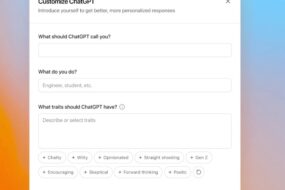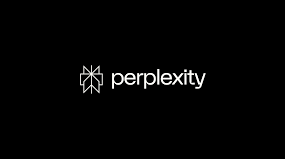
Source: Will Lockett/Medium
A giant leap forward might be about to happen.
Tesla didn’t just pioneer the electric vehicle — it was also a trailblazer for EV chargers. The company was one of the first to develop superchargers and the first to build a genuinely nationwide network of these brilliant charge stations. In fact, one of the biggest draws to Tesla is its charging network, which only Teslas can access, though that is soon about to change. However, ever the innovator, Musk wants to push this even further, and so Tesla is rolling out its latest V4 charger. Not much hype has been generated around this latest model, but when you look a little closer, you realise that Tesla is poised to dominate yet another corner of this ever-growing industry.
Tesla’s current supercharger network is comprised of V1s, V2s, and V3s. The V1s and V2s have a peak charge rate of only 150 kW, which is now fairly standard for most rapid chargers. Tesla upped the ante with the V3, which is technically capable of delivering peak charge rates of 324 kW, but most of the time, it only provides a peak charge of 250 kW, as that is the rate that current Teslas can handle.
The V4 is in another league. Its peak charge rate is 1 MW, or 1,000 kW! To give some sense of scale here, the V3 charges with the equivalent power of 335 horsepower, the same as a relatively fast combustion car. The V4 charges with the equivalent power of 1341 horsepower. That is the same power as the world-beating Czinger 12C hypercar and considerably more than the Model S Plaid.
So why has Tesla developed such a powerful piece of equipment? Their current cars can’t take advantage of this higher charge rate, as they operate at 400 volts and are limited by what their cells can take. If Musk moved to 800-volt architecture, he could increase charge rates to 350 kW or a little higher, but nowhere near 1 MW. Instead, the V4 is meant for the Semi and the Cybertruck.
Both the Semi and the Cybertruck have giant packs of 850 kWh and 200 kWh, respectively, and thanks to battery architecture in the kilovolts, both can handle the 1 MW charge rates. This means the Cybertruck (tri-motor, 466-range variation) can charge from 10% to 80% in only 25 minutes, despite its large battery. This is even more impressive for the Semi, which can maintain peak charge rates for longer, enabling a 10% to 80% charge time in only 30 minutes!
These heavy-duty EVs need these fast charge speeds to be useful. Charging with a V3 supercharger would give a 10% to 80% time of over an hour for the Cybertruck and just shy of four hours for the Semi! Needless to say, those who work to haul large loads long distances or have a busy schedule wouldn’t be able to put up with such long waits.
So, for the Cybertruck and Semi to become the sales boom Musk hopes they will be, Tesla needs to develop, build, and rapidly roll out 1 MW-capable chargers nationwide, which is what they are doing with the V4. Now, the first V4 is currently being installed in the Netherlands, which is interesting, as the only Tesla Semi I can find in Europe is in Hungary, and there are no Cybertruck prototypes in Europe yet. So who will use it? More on that in a minute.
Some critics, including myself, saw this issue and realised that the Cybertruck and Semi could be derailed if the charger network wasn’t ready for them. This first V4 charger in the Netherlands shows that Tesla is nearly ready to do a full-on rollout to ensure they meet this demand. Indeed, rumours are doing the rounds that Tesla plans to roll out the V4 insanely quickly. This makes sense, as the Cybertruck is set to become one of Tesla’s best-selling vehicles ever when it finally comes to market, and the Semi is already selling very well. To ensure these customers are happy, Tesla needs a network of V4 chargers up and running ASAP.
But this isn’t the stroke of genius here. Instead, it is the fact that V4 chargers are compatible with non-Tesla vehicles right off the bat! It will not only have a longer cable to ensure it can reach non-Tesla charger ports, but it will also be CCS compatible, which is the plug type and charging standard most commonly found on other EVs.
Now, yes, Tesla is retrofitting their entire charging network with the magic dock so that the other versions of superchargers can also charge non-Tesla vehicles. But some EVs already available or coming in the next few years can take far higher charge speeds than 250 kW, such as the Kia EV6, Hyundai Ioniq 5 and 6, and Zeekr 001. What’s more, upcoming batteries, like CATL’s sodium-ion pack and their Qilin pack, can be easily configured to take 1MW charge rates. So over the next few years, the wider EV world will also need these insanely fast charge stations.
However, Tesla will be the first to have a widespread network of 1 MW-capable chargers. This means that Tesla’s supercharger network will dominate this industry, and Musk can watch the money pour in. Moreover, these rivals can’t afford to invest in building their own 1MW charging network. They are making razor-thin margins on their EVs, so it instead makes sense to rely on Tesla’s network and focus on investing in development to increase their car’s profitability.
But the genius of the V4 doesn’t end there! You see, Tesla’s 4680 cells could help the rest of their lineup take advantage of the V4. When the 4680 was first launched, it was meant to use zero cobalt and a pure silicon anode, enabling lightning-fast charge rates. Sadly, this proved too difficult to manufacture, so the current 4680s are just larger versions of their old cells (read more here). However, the 4680 production line is now scaled up, and it seems like Tesla is looking to introduce these promised features. If it does, then 4680-equipped Tesla 3s and Ys could charge at rates close to 400 kW using a V4 charger, giving a 10% to 80% charge time of only 15 minutes!
So, in short, the V4 will make the Cybertruck and Semi incredibly useful and help their sales figures explode; it will rake in tonnes of money from charging non-Tesla EVs for years to come; and if Tesla can finally sort out 4680 battery production, it will make their current lineup substantially better. As a bonus, it could also cause a revolution in the wider EV world by making ultra-fast charging EVs worthwhile, as an open 1MW charger network will be available. I’m not sure how anyone else can catch up with them here. No one comes close to competing with Tesla’s charger network, and this will just boost them into a new league.
Source: Will Lockett/Medium






